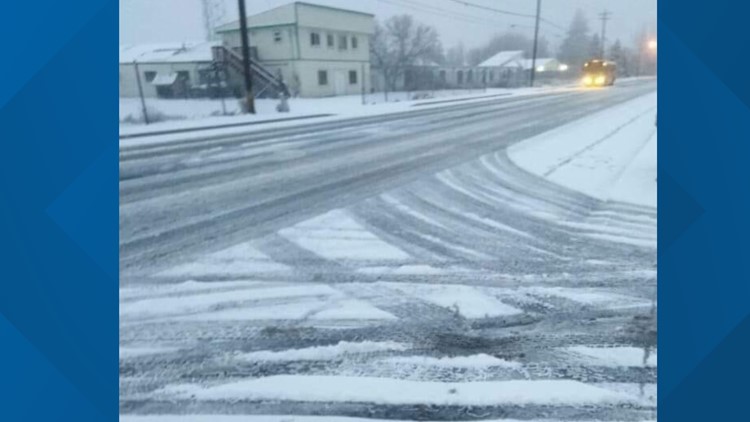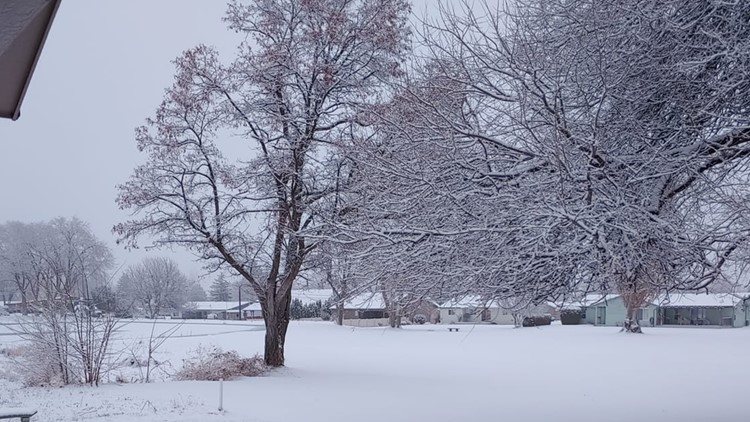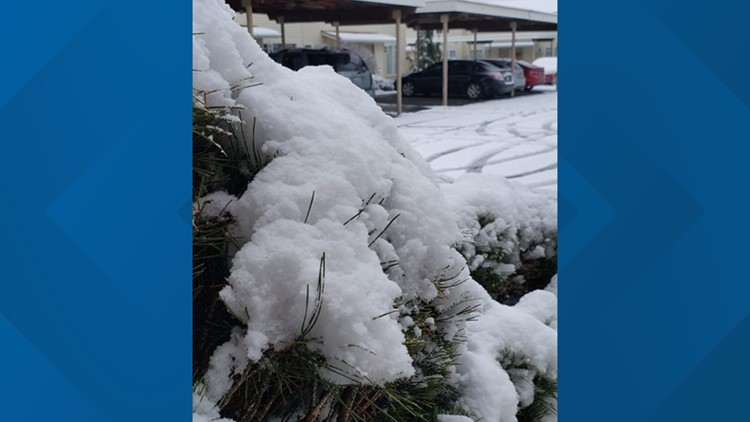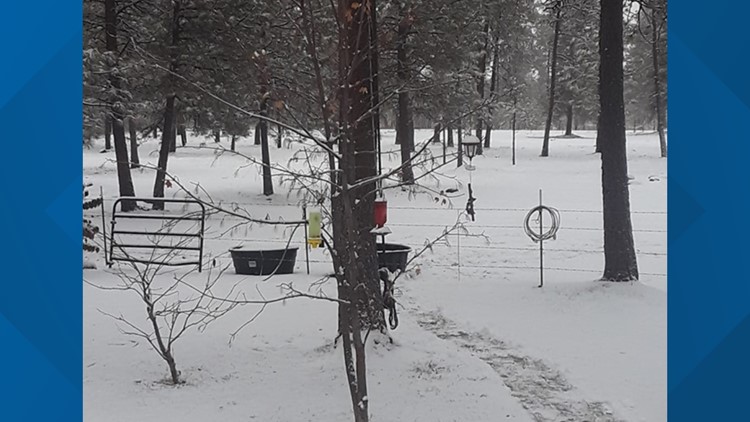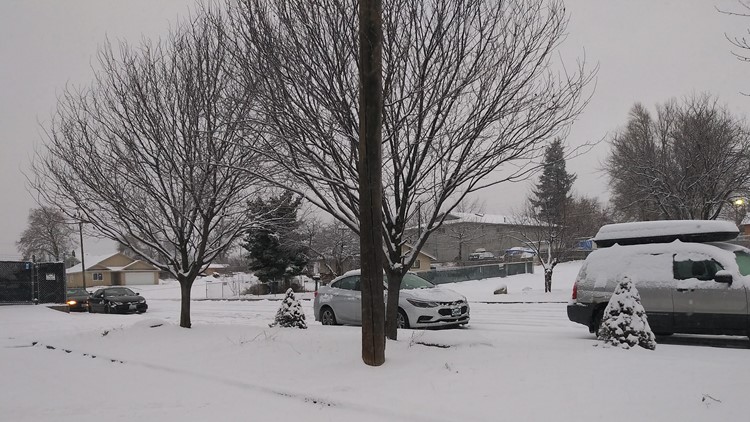SPOKANE, Wash. — Extremely icy roads snarled the Wednesday morning commute after more than two inches of snow fell overnight in the Spokane area.
Cars crashed and slid off roads, including major arterials.
The City of Spokane pre-treated arterial roads, but not residential roads, before the snow started falling Tuesday night.
City spokesperson Marlene Feist said arterial roads were treated with deicer on Tuesday night before the snow started falling, but crews didn't service residential roads.
"We don't deice in the residential, we deice on the arterials," Feist said.
Feist said snow packed quickly and led to some icy conditions before rain fell on top of it. This led to what she called glazing, where freezing rain falls onto frigid ground and creates a layer of ice.
“That is a challenging condition. It’s often an early season condition," Feist added.
"It wasn't a perfect response," she added.
A lack of cars on the road also contributed to the conditions that led to slick roads. Feist said the deicer the city uses works best when cars drive over the snow and churn the deicer into the snow.
She also said all major arterials, including those on the South Hill, had been treated. City procedure is to apply deicer to roads that carry the majority of vehicle traffic, according to Feist, who also said Spokane has about 750 miles of arterial roads.
Feist said crews were mostly sanding and applying more deicer to arterials and school zone roads on Wednesday morning. She added that while the trucks that were working the roads weren't snow plows, most sanding and deicing trucks have plow equipment attached to the front of the vehicle.
Crews used liquid de-icer to treat the roads, which is magnesium chloride, along with sand protection, Feist said. Graunular product is typically used with heavier snowfall.
Spokane County leaders said their crews used similar measures to tackle road conditions, adding that they were "well prepared" for the snowfall.
"With snow in the forecast, road crews spent Tuesday applying sand, mixed with a dry deicer, in strategic areas throughout the county. Spots that are prone to becoming icy and hazardous included hills, curves, signed intersections and bridges," a statement from the county reads.
"Hours before this morning’s commute, graders and snow plows were clearing Priority 1 and 2 roads (emergency routes and primary arterials respectively). Motorists should remember to stay 50-feet back from snow removal equipment and NEVER attempt to pass on the right side. Property owners should also clear their storm drains of debris, snow and ice," the statement continued.
Those who are interested in tracking the progress of snow plows can visit the county's website.
This snowfall didn't cause the city to trigger 24-hour plowing and deicing operations. This usually occurs when four inches of snow or more fall in the city.
Temperatures have warmed since the morning commute and there was not enough snow on the roads to warrant a full-city plow, Feist said.
"We responded in the way that we normally would," she added.



